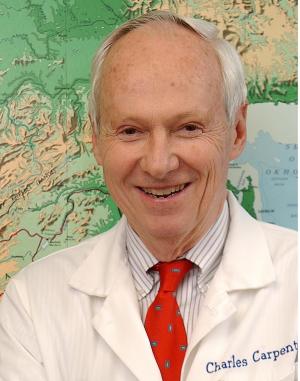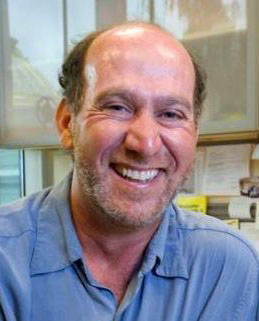PROVIDENCE, R.I. [Brown University] — Recent, hopeful developments in the global fight against HIV/AIDS have spurred speculation, especially around World AIDS Day Dec. 1, that public health has turned a corner. Brown is home to many leading experts on the disease who can provide insight into the action required to make that hope a reality.
For additional information or to arrange interviews, please contact David Orenstein, media relations specialist for life sciences, at 401-863-1862.

Professor of Medicine
Director, Lifespan/Tufts/Brown Center for AIDS Research
Carpenter has been involved in the care of persons living with HIV since 1982. He served as the site director of the longitudinal CDC-supported HIV Epidemiology Research Study (HERS) from 1992-1999. His research over the last decade has been directed toward two main areas: the optimal treatment of HIV infection in North American women and therapeutic strategies that are effective in the developing world.
“Statements regarding global reduction in infections are uncertain. Several nations with sound data collection, including the United States, show an actual increase in infections,” Carpenter says. “Increases have also occurred in several sub-Saharan African countries.
“We still need to make a major effort to ensure that all adults in the United States have HIV testing. At the time, we think that only about 60 percent of U.S. adults have had such testing, and we continue to see a surprising number of new cases of HIV infection in middle-aged individuals who are in otherwise good health, but do not belong to risk groups.”

Professor of Medicine
Director, Division of Infectious Diseases, Rhode Island Hospital and The Miriam Hospital
Timothy P. Flanigan has spearheaded a program of modified, directly observed therapy for HIV treatment for individuals who are marginalized and would otherwise not receive the benefit of new combination HIV treatments. He has received national notice for an NIH-funded program for active substance abusers to provide community-based treatment strategies. Pilot programs are under way to extend these community-based therapies for pregnant women and persons leaving prison.
Flanigan can comment on Pope Benedict’s recent comments regarding the use of condoms to prevent infection and on advances in treatment and prevention. “There is great hope on the horizon,” he said.

Assistant Professor of Community Health and Medicine
Mark Lurie is a social epidemiologist working on HIV/AIDS, STI, and TB in sub-Saharan Africa. He has studied the role of migration in the spread of HIV in South Africa and examines the impact of antiretroviral therapy on HIV epidemic dynamics in sub-Saharan Africa. In articles in AIDS and Behavior and The Lancet, he questioned claims that concurrent sexual partnerships are a major driver of the infection on the continent.
“The NEJM article [showing a preventative effect of antiretrovirals] is in a scientific sense highly encouraging but in terms of its applicability to Africa, where the majority of new infections happen, its impact will be close to zero, because access to the medicines is unlikely to be sufficient. Overall, the global reduction is also encouraging but there is still much work to be done. With 2.6 million new infections in 2009, we can hardly declare victory. The biggest danger is for funding agencies to believe that we have won the fight against HIV/AIDS. That would result in funding cuts and ultimately a reversal of the progress we have made.”

Assistant Professor of Medicine (Research)
Amy Nunn conducts social science research examining the structural, social and behavioral factors influencing racial disparities in HIV infection in the United States. She received an NIH Career Development Award in 2010 to investigate the role of concurrent sexual partnerships and other factors in potentiating racial disparities in HIV infection. In partnership with the Philadelphia mayor’s office of faith-based initiatives, she recently organized a citywide effort among black churches and mosques to increase HIV testing, awareness and tolerance.
“The global public health community has made tremendous strides in HIV treatment in the United States and abroad in recent years. This year, several groundbreaking HIV prevention studies were released that offer much promise for reducing HIV infections in the United States and globally. Also, for the first time since the onset of the AIDS epidemic, the United States has a national AIDS strategy. However, much work remains to be done to reduce enormous racial disparities in HIV infection in the United States, where African Americans have HIV infection rates seven times those of whites. Reducing racial disparities in HIV infection is a critical component of President Obama’s national AIDS strategy and should continue to be a primary focus of all HIV prevention and treatment efforts in the United States for the next decade.”
